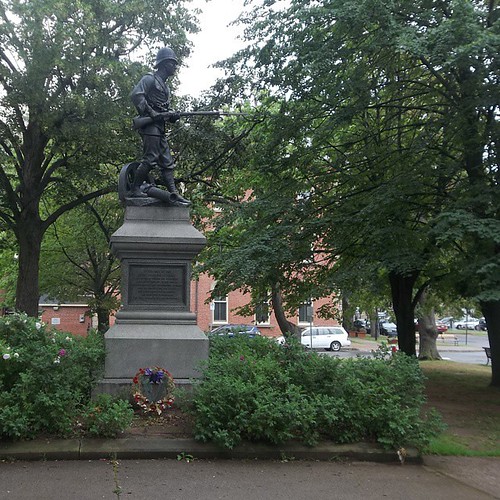Bloomberg's Renee Bonorchis and Palesa Vuyolwethu Tshandu report on the wave in protests in South Africa against statues of prominent colonial-era figures, people whose work led to apartheid. On the one hand, they are only symbols; on the other, well, they are symbols.
The statue of Paul Kruger, a president of the Afrikaner-led Transvaal Republic before the Anglo-Boer war, and four figures of townspeople around him, were splashed with green paint in Pretoria’s Church Square on April 5. Statues of Britain’s King George V in Durban and Queen Victoria and the Horse Memorial in the coastal town of Port Elizabeth were also vandalized over the Easter holiday weekend. In March, the statue of Cecil John Rhodes at the University of Cape Town was smeared with human excrement.
The “statues should be taken down,” Moafrika Mabongwana, EFF deputy chairman for Tshwane, the municipal area that covers the capital Pretoria, said in a phone interview on Tuesday. “We don’t agree that these statues should be put in public places. We aren’t saying that history should be erased. All the statues should be identified and taken down.”
In the 17th century Dutch and French settlers arrived in what is now South Africa’s Western Cape province. Later the British arrived and Rhodes helped to expand the U.K.’s influence as head of the provincial government and by funding an expedition that led to the colonization of what is now Zimbabwe. The government that created apartheid laws came into power in 1948 and the country’s first all-race elections were held in 1994.
While some towns and street names commemorating apartheid and colonial-era leaders have since been changed, many historical symbols have remained.
“If you want to change these statues, defacing them is exactly the wrong way to go about it because it builds resistance,” JP Landman, a Johannesburg-based independent political and economic analyst, said in a phone interview.











































